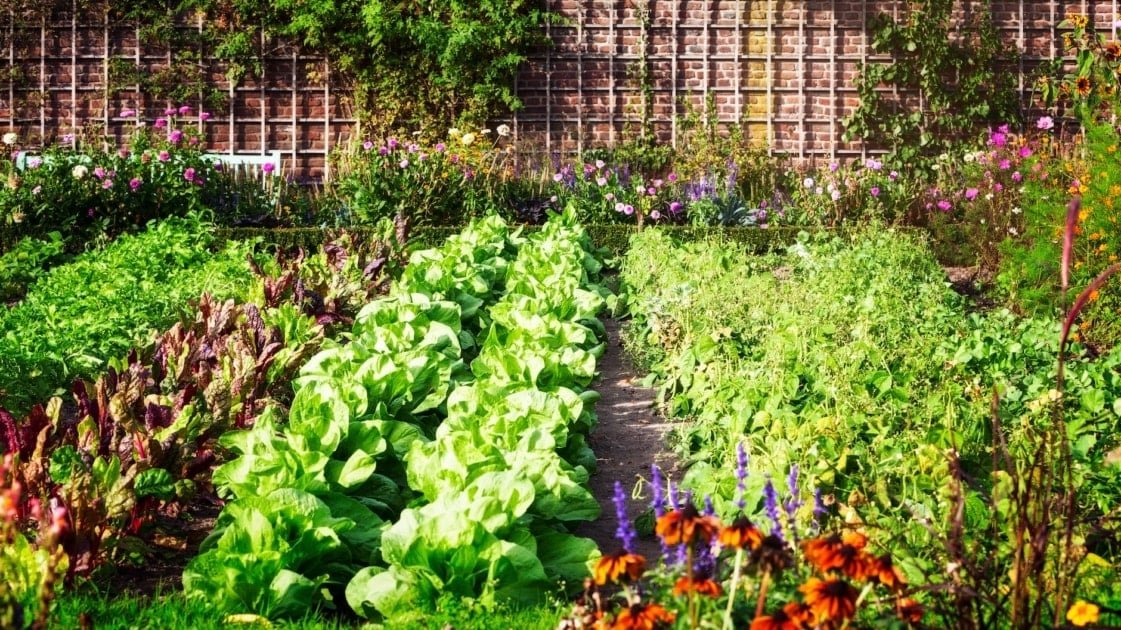Gardening isn’t just about planting seeds and hoping for the best; it’s an art form where understanding the relationships between different plants can transform your garden. One such relationship is through companion planting. Oregano, a popular herb cherished for its culinary uses, holds a secret: it’s an excellent partner for many plants. This guide delves into the world of oregano companion planting, illustrating why this herb is so revered in garden circles.
Top Benefits of Planting Oregano Alongside Other Plants
- Natural Pest Deterrence: Garden pests can be a nuisance, but with oregano by your side, you’re in good hands. Oregano releases a distinct scent which, while pleasant for humans, is less so for many pests. By planting oregano near vulnerable plants, you can ward off unwanted invaders naturally.
- Soil Enrichment and Mutual Nutrient Sharing: Some plants take a lot from the soil, depleting it over time. However, oregano has a more balanced relationship with the earth, making it an excellent partner for plants that are heavy feeders. Its root system can also help break up tough soils, allowing better water infiltration and root growth for nearby plants.
- Enhanced Growth and Yield for Companion Plants: Oregano’s presence may boost the overall health and vigor of its neighboring plants. Through a combination of its pest-repelling properties and mutual nutrient exchange, plants grown alongside oregano often flourish.
Best Companion Plants for Oregano
- Vegetables That Thrive with Oregano: Broccoli, peppers, and beans are just a few veggies that can benefit from oregano’s presence. These plants, when placed close to oregano, can experience fewer pest issues and might even taste better due to the enriched soil environment.
- Flowers That Complement Oregano’s Growth: Not only does oregano play well with veggies, but it also pairs nicely with many flowers. Marigolds, for instance, can further deter pests, while roses can benefit from the improved soil conditions oregano brings.
- Plants to Avoid Planting Near Oregano: While oregano is friendly with many, it’s not best buddies with all. It’s wise to avoid planting it too close to mint, as they can compete for resources, potentially stunting the growth of both.
Different Types of Oregano for Companion Planting
- Common Oregano (Origanum vulgare): This variety is the most widely known and is a staple in many gardens. It’s versatile, hardy, and pairs well with numerous plants.
- Greek Oregano (Origanum vulgare hirtum): A more robust flavor characterizes this type, making it a favorite for culinary uses. Its companion planting benefits are similar to the common oregano.
- Golden Oregano (Origanum vulgare ‘Aureum’): With its beautiful golden leaves, this variety adds a splash of color to gardens. It’s not only aesthetically pleasing but also holds its own in the realm of companion planting.
- Compact Marjoram (Origanum majorana ‘Compactum’): Though often confused with oregano, this variety offers a sweeter taste and a more compact growth habit. Its benefits as a companion plant are comparable to other oregano varieties.
Oregano’s Role in Enhancing Garden Aesthetics
Gardening is not just about cultivating plants for food but also about creating a haven of beauty and tranquility in our own backyards. One of the secrets to achieving this aesthetic and functional harmony is through companion planting. And when it comes to this method, oregano companion planting is a game-changer.
Textural Beauty: Oregano’s Soft, Sprawling Foliage
Oregano, with its soft, sprawling green foliage, adds a unique textural dimension to the garden. Planted alongside vegetables like tomatoes or peppers, it contrasts the upright stature of these plants, filling spaces and providing a lush undercarpet. This rich texture not only complements other plants but also suppresses weed growth, serving a dual purpose of beauty and functionality.
Fragrant Blooms: Adding Aroma to Your Garden
When we think of oregano, its culinary uses often come to mind. But beyond the kitchen, oregano flowers are a delight in the garden. These tiny white or purple blooms not only add a dash of color but also release a subtle fragrance. The aroma, combined with that of other aromatic plants in oregano companion planting schemes, can turn your garden into a fragrant paradise.
Seasonal Color Variations: From Vivid Greens to Subtle Purples
Oregano is not a one-note plant. Depending on the variety and season, its leaves can range from vivid greens in summer to subtle purples in cooler weather. Such variations can create a dynamic visual interest in the garden, making oregano companion planting a technique for year-round beauty.
Practical Tips for Successful Oregano Companion Planting
Achieving the desired aesthetic and functional results requires some know-how. Here are some tips to ensure that your oregano companion planting venture is a success:
- Plant Spacing: Ensure that you’re providing adequate room for growth. Oregano spreads but should not overshadow or crowd its companions.
- Harvesting Oregano: While harvesting oregano for your culinary needs, be gentle. Avoid disturbing the roots of companion plants.
- Rotation and Crop Succession: Incorporate oregano into your crop rotation plans. This ensures soil health and reduces the risk of disease.
Final Thoughts: The Harmony of Oregano Companion Planting
Gardening is an art, and every plant plays a part in this grand design. Oregano, often overlooked, proves to be a versatile player in the garden theater. Its textural beauty, fragrant blooms, and seasonal color variations make it an invaluable addition. Through oregano companion planting, gardeners can harness these qualities, creating a garden that’s not just productive, but also a sight to behold. Whether you’re an experienced gardener or just starting out, consider oregano as your next garden ally. Its rewards, both aesthetic and functional, are bound to charm you.

